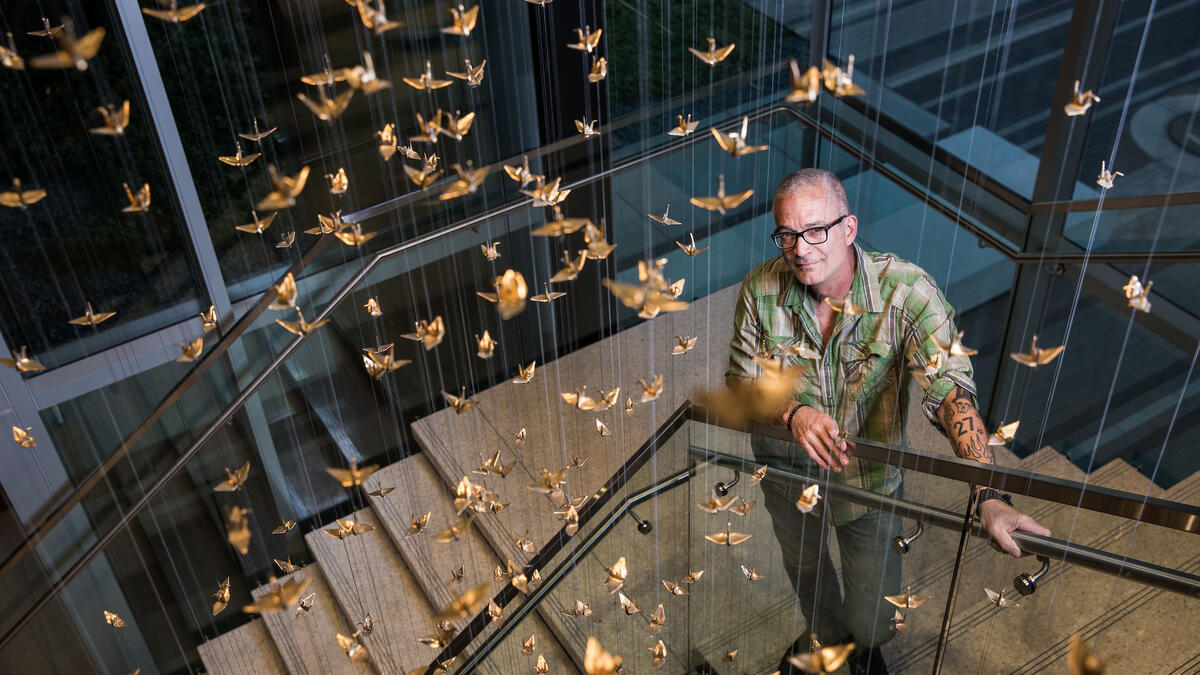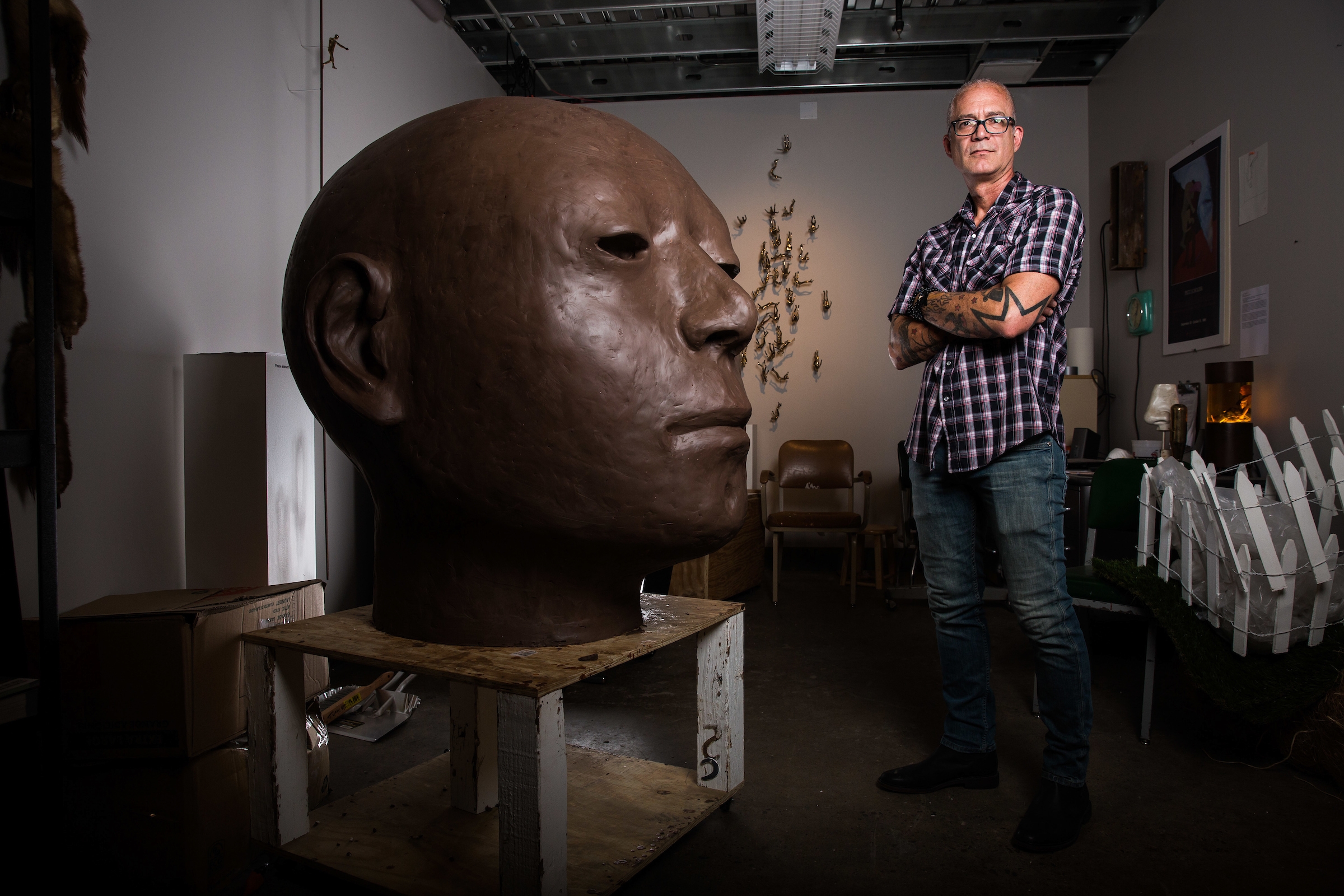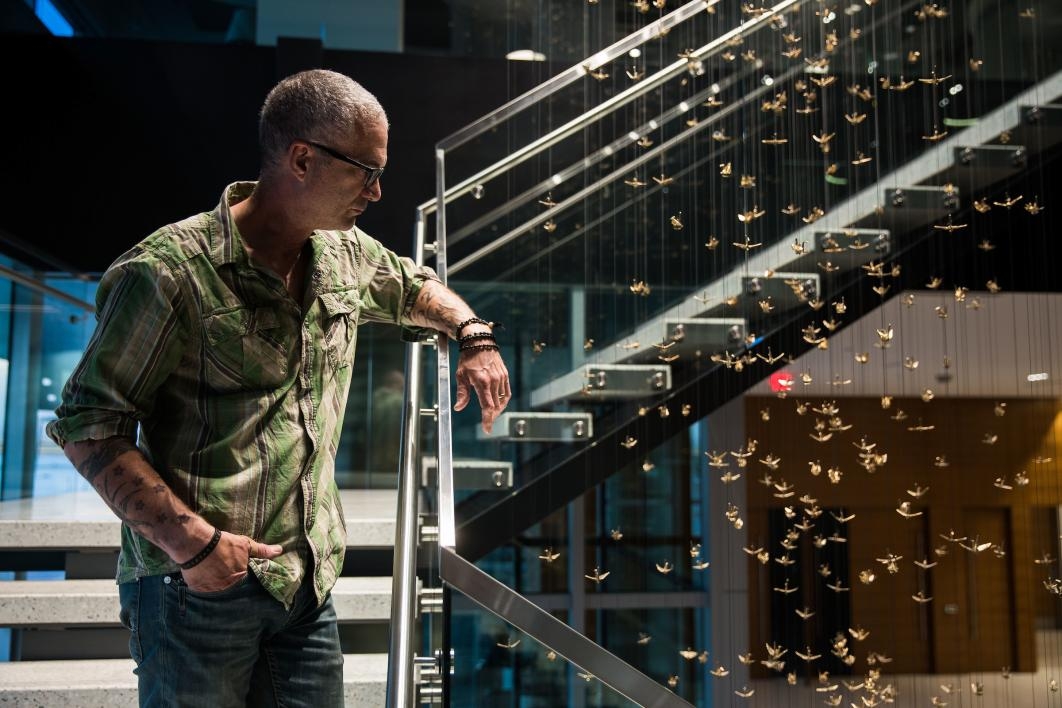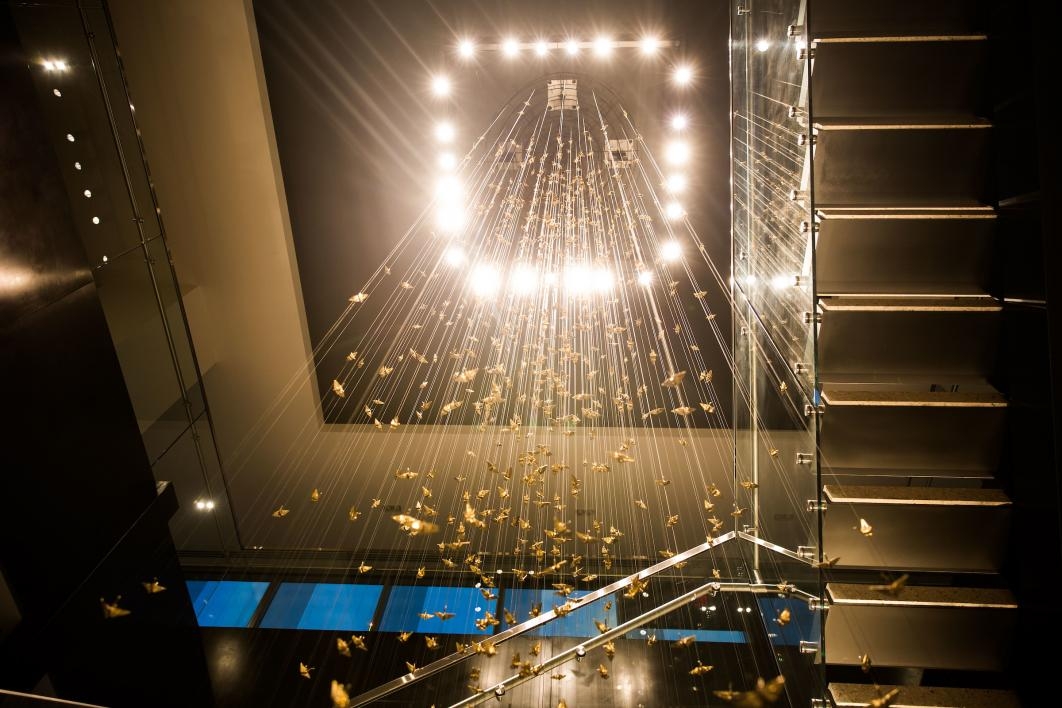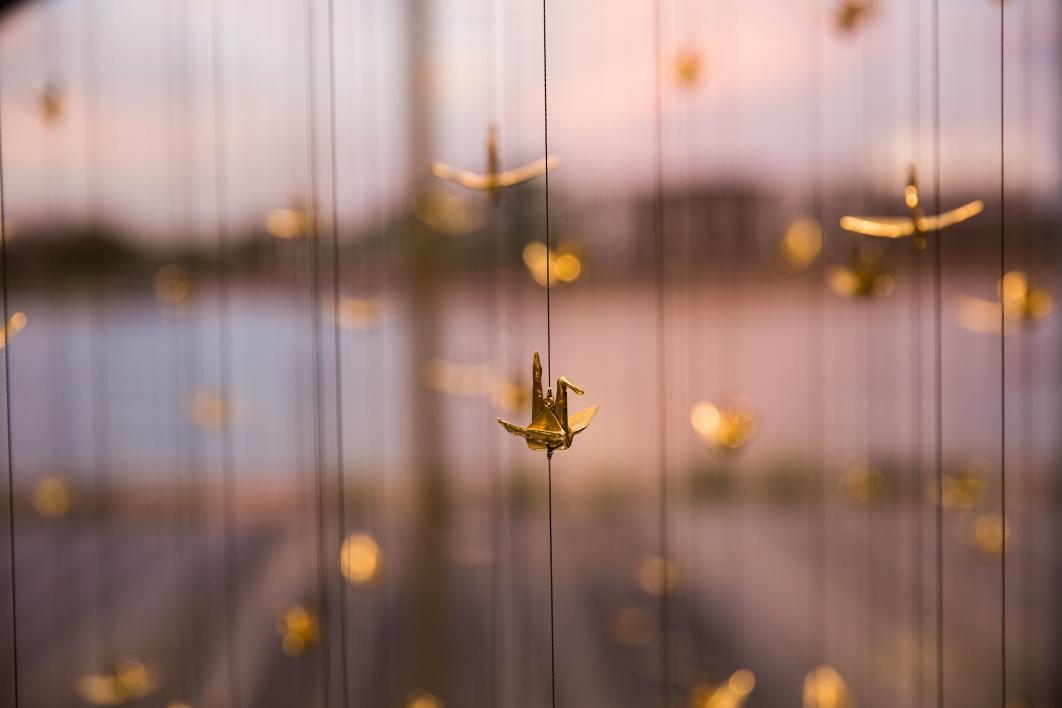Exactly 1,000 bronzed, origami cranes appear to float in a main corridor of a sprawling, $900 million Tempe office complex, just up the road from where the installation’s creator says he learned to apply a worldwide perspective to his art.
John Tuomisto-Bell says his latest project symbolizes the fragility of life combined with his permanent wishes for peace, hope and compassion — and that it wouldn’t have come together without Arizona State University.
“Before, I used to think small potatoes and was fairly narrow-minded, but now I am thinking globally and on a much larger scale,” said Tuomisto-Bell, a third-year master of fine arts sculpting student in ASU’s School of Art in the Herberger Institute for Design and the Arts.
The installation gracing a large building on insurance giant State Farm’s regional campus headquarters comes after the 53-year-old Tuomisto-Bell returned to the classroom after years of professional success — joining countless others in making such a move through ASU.
“In many cases, artists come back to get their master’s because they want a shift in their career, want to explore new technologies,” School of Art director Adriene Jenik said. “Others miss being challenged and getting critical feedback.”
Herberger’s Master of Fine Arts (MFA) program graduates 65 to 75 students a year and accepts two to three sculpting students in each class, she said.
Veteran sculpting instructor James White, who taught Tuomisto-Bell as an undergraduate 25 years ago, said getting an MFA is a good business move.
“In the art world, there are doors closed that you don’t even know are closed because someone has a master’s degree and the other person does not,” White said. “There is no higher degree for a practicing studio artist than an MFA — and no greater prestige.”
Jenik said there have been several influential recent graduates, including interdisciplinary artist Kade Twist.
Twist creates interactive media installations with video, sound and text. His work has been exhibited in the Museum of Contemporary Native Arts in Santa Fe, New Mexico, the Chelsea Art Museum in New York City and the Smithsonian Institution in Washington, D.C.
“Once our students leave here, they’re getting teaching jobs, winning major awards, having exhibits, are shown in major museums, and those are all markers that ASU is having an impact on the world,” Jenik said.
ASU’s sculpting program has built-in incentives, including a nationally recognized foundry, White said. Tuition can be offset by grants, scholarships and teaching stipends, and students often leave the program with little or no debt, he said. MFA students also receive studio space at Grant Street Studios in Phoenix’s warehouse district, giving their work better visibility and an opportunity to create in an environment with other artists.
When Tuomisto-Bell received his Bachelor of Fine Arts in 1991, he envisioned himself as a “player in the New York scene, but that success never materialized.”
He did, however, find a place in the Arizona workforce, casting large and small bronze pieces for commercial clients with local foundries. He opened his own shop in 2001 with his wife, Julie, and brother Christian Bell. He said the Tuomisto-Bell Studio Foundry has provided steady income for years, enabling him buy a house and raise a family.
He also developed into an award-wining artist, with works on display across the U.S. and major collections in the Scottsdale Museum of Contemporary Art, the Mesa Arts Center and the Shemer Art Center in Phoenix.
"We're thrilled that John decided to pursue graduate work at ASU," Herberger Institute Dean Steven J. Tepper said. "As an established professional artist, he brings a lot to the program, and it's gratifying to watch his progress as an artist in his time here. Most careers these days morph and change and take unexpected directions; John is one of several students, undergraduate and graduate, who have decided to return to a university, and to the Herberger Institute in particular, to forge new pathways. "
Tuomisto said the master’s program has sharpened his skills while expanding his scope.
Last year, he took the 1,000 Cranes project to an elementary school in Hiroshima, Japan, in memory of a young girl who became sick and died after the infamous atomic bomb blast at the end of World War II. She was said to have continuously folded origami cranes, praying that if she made 1,000 her health would improve.
“Some people have told me that you can’t do anything about the violence of mankind, that war has always been a part of our existence and will always be,” Tuomisto-Bell said. “I do not think this is true. I just look at how Hiroshima has transformed from the ashes of war into a beautiful city full of wonderful, loving people, and my hope in mankind is restored.”
Tuomisto-Bell brought back the concept to Tempe in the hopes that “peace can be heard from this generation and future generations.”
See the installation
Address: 450 E. Rio Salado Parkway, Tempe, 85281
Viewers can see 1,000 Cranes from the public sidewalk behind Building 3 on the State Farm at Marina Heights campus.
Other influential sculptors
• 2015 MFA sculpture grad Cecily Culver won the 2015 Dedalus Foundation Fellowship in Painting and Sculpture, which included a $20,000 grant and a studio to showcase her work in New York.
• 2014 MFA sculpting student Bobby Zokaites has produced artwork for public spaces in Minnesota, New Jersey, Missouri and Arizona.
• Incoming MFA sculpting student Cydnei Mallory is a 2016-17 Autodesk Scholarship winner. It will enable her to travel to Italy to learn the craft of carving stone and marble. Her works have been exhibited in several galleries in Pennsylvania and Arizona.
More Arts, humanities and education

Professor's acoustic research repurposed into relaxing listening sessions for all
Garth Paine, an expert in acoustic ecology, has spent years traveling the world to collect specialized audio recordings.He’s been to Costa Rica and to Ecuador as part of his research into innovative…

Filmmaker Spike Lee’s storytelling skills captivate audience at ASU event
Legendary filmmaker Spike Lee was this year’s distinguished speaker for the Delivering Democracy 2025 dialogue — a free event organized by Arizona State University’s Center for the Study of…

Grammy-winning producer Timbaland to headline ASU music industry conference
The Arizona State University Popular Music program’s Music Industry Career Conference is set to provide students with exposure to exciting career opportunities, music professionals and industry…


